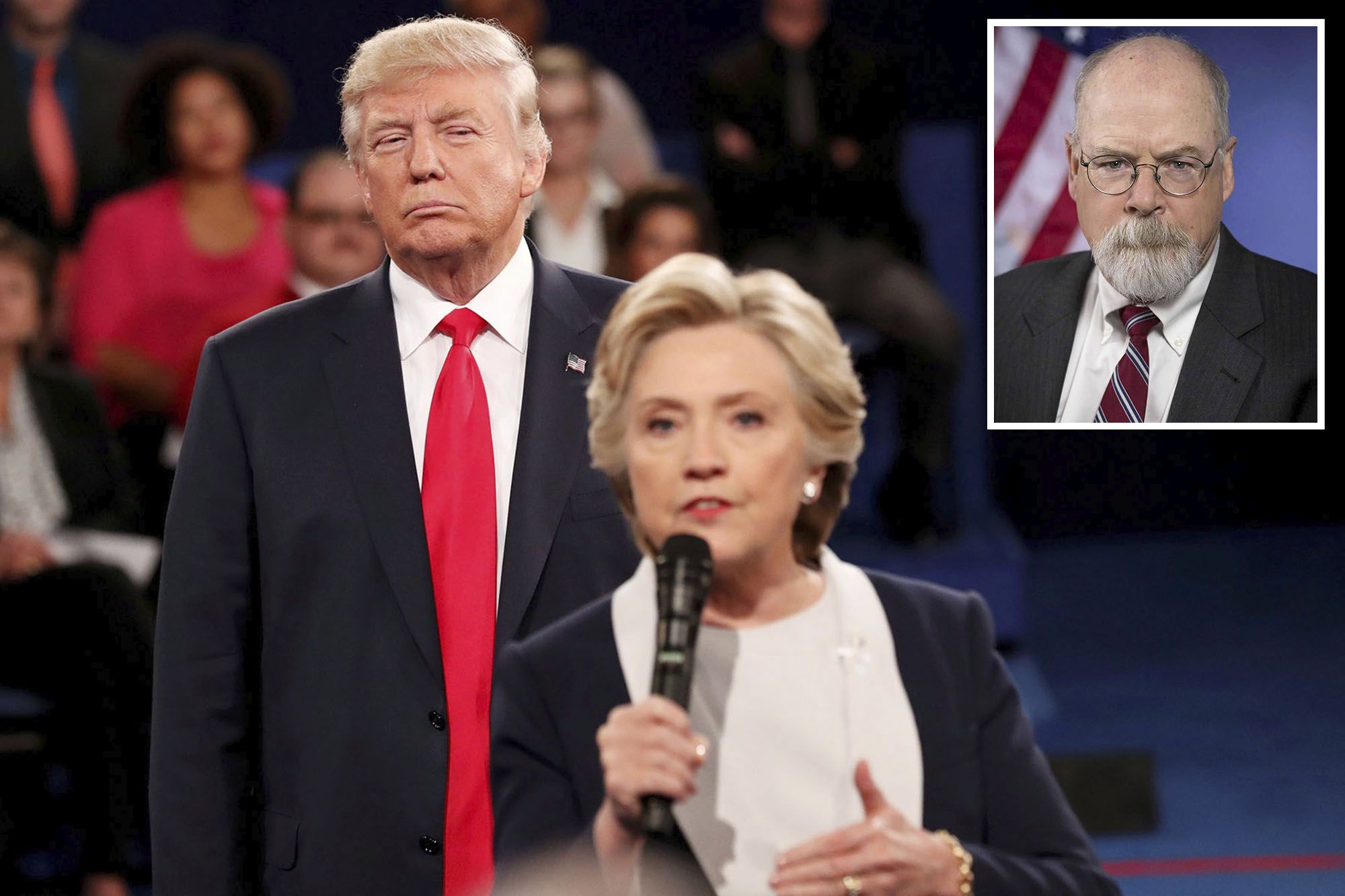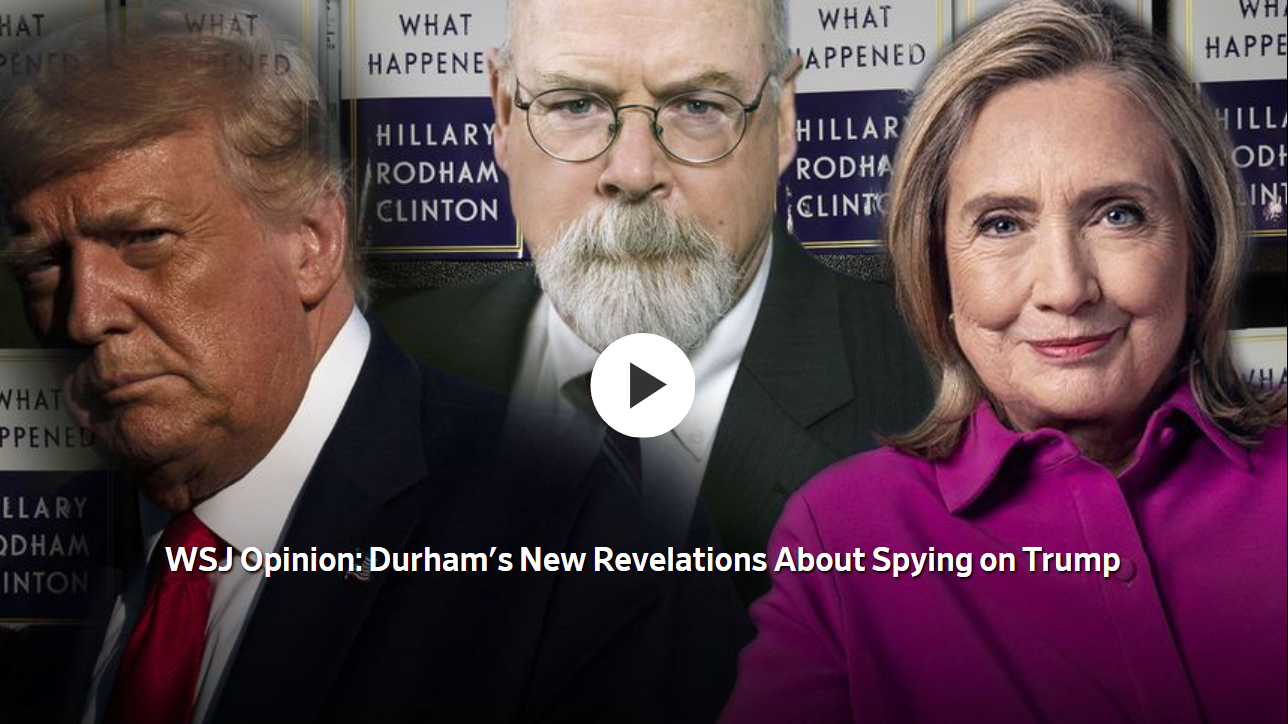
Durham says techies linked to the Clinton campaign had access to White House and Trump Tower internet data.
WSJ, The Editorial Board , Feb. 14, 2022

Special Counsel John Durham continues to unravel the Trump-Russia “collusion” story, and his latest court disclosure contains startling information. According to a Friday court filing, the 2016 Hillary Clinton campaign effort to compile dirt on Donald Trump reached into protected White House communications.
The filing relates to Mr. Durham’s September indictment of Michael Sussmann, a lawyer who represented the Clinton campaign while he worked for the Perkins Coie law firm. Mr. Sussmann is accused of lying to the FBI at a September 2016 meeting when he presented documents claiming to show secret internet communications between the Trump Organization and Russia-based Alfa Bank. The indictment says Mr. Sussmann falsely told the FBI he was presenting this information solely as a good citizen—failing to disclose his ties to the Clinton campaign. (He has pleaded not guilty.)
The indictment revealed that Mr. Sussmann worked with “Tech Executive-1,” who has been identified as Rodney Joffe, formerly of Neustar Inc. The indictment says Mr. Joffe used his companies, as well as researchers at a U.S. university, to access internet data, which he used to gather information about Mr. Trump’s communications.
Mr. Durham says Mr. Joffe’s “goal” was to create an “inference” and “narrative” about Mr. Trump that would “please certain ‘VIPs,’ referring to individuals at Perkins Coie and the Clinton Campaign.”
The new shocker relates to the data Mr. Joffe and friends were mining. According to Friday’s filing, as early as July 2016 Mr. Joffe was “exploiting” his “access to non-public and/or proprietary Internet data,” including “Internet traffic pertaining to . . . the Executive Office of the President of the United States (“EOP”).”
The filing explains that Mr. Joffe’s employer “had come to access and maintain dedicated servers for the EOP as part of a sensitive arrangement whereby it provided internet services” to the White House. Mr. Joffe’s team also was monitoring internet traffic related to Trump Tower, and Mr. Trump’s apartment on Central Park West.
White House communications are supposed to be secure, and the notion that any contractor—much less one with ties to a presidential campaign—could access them is alarming enough. The implication that the data was exploited for a political purpose is a scandal that requires investigation under oath.
The filing suggests the data collection continued into the Trump Presidency. Mr. Durham says that on Feb. 9, 2017, Mr. Sussmann met with a second federal agency (“Agency-2”) to provide “an updated set of allegations,” and that these “allegations relied, in part, on the purported internet traffic that Mr. Joffe and others had assembled pertaining to Trump Tower, Donald Trump’s New York City apartment building, the EOP” and a healthcare provider.
(Late Monday a spokesperson for Mr. Joffe said in a statement that “contrary to the allegations in this recent filing, Mr. Joffe is an apolitical internet security expert with decades of service to the U.S Government who has never worked for a political party.” The statement added that “there were serious and legitimate national security concerns about Russian attempts to infiltrate the 2016 election” and that “respected cyber-security researchers were deeply concerned about the anomalies they found in the data and prepared a report of their findings, which was subsequently shared with the CIA.”) That could certainly use some elaboration.
The filing says the new allegations Mr. Sussmann provided—claiming suspicious ties between a Russian mobile phone operator and the White House—were also bogus, and that Mr. Sussmann again made the false claim that he wasn’t working on behalf of a client.
The disclosures raise troubling questions far beyond the Sussmann indictment. How long did this snooping last and who had access to what was found? Who approved the access to White House data, and who at the FBI and White House knew about it? Were Mrs. Clinton and senior campaign aides personally aware of this data-trolling operation?
Mr. Durham’s revelations take the 2016 collusion scam well beyond the Steele dossier, which was based on the unvetted claims of a Russian emigre working in Washington. Those claims and the Sussmann assertions were channeled to the highest levels of the government via contacts at the FBI, CIA and State Department. They became fodder for secret and unjustified warrants against a former Trump campaign official, and later for Robert Mueller’s two-year mole hunt that turned up no evidence of collusion.
Along the way the Clinton campaign fed these bogus claims to a willing and gullible media. And now we know its operatives used private tech researchers to monitor White House communications. If you made this up, you’d be laughed out of a Netflix story pitch.
Mr. Durham’s legal filing is related to certain conflicts of interest in Mr. Sussmann’s legal team, and it remains unclear where else his probe is going. But the unfolding information underscores that the Russia collusion story was one of the dirtiest tricks in U.S. political history. Mr. Durham should tell the whole sordid story.
